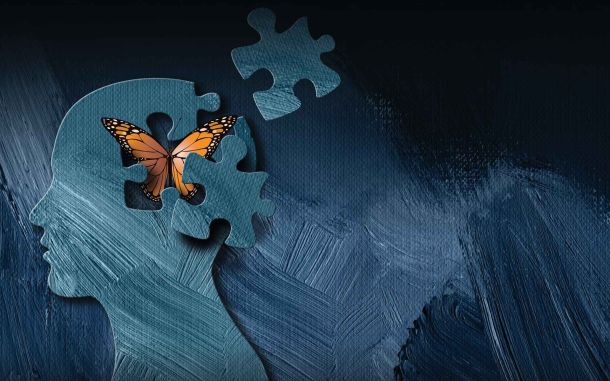Tinge of Life
- The miracles of the prophets represent the highest points that scientific developments would ever attain and as such, they are set as goals which humanity should seek to accomplish.

In This Article
-
The miracles of the prophets represent the highest points that scientific developments would ever attain and as such, they are set as goals which humanity should seek to accomplish.
In his Twentieth Word, Bediuzzaman Said Nursi, a 20th century Islamic scholar and teacher, uses an interesting phrase, where he argues that the miracles of the prophets represent the highest points that scientific developments would ever attain and as such, they are set as goals which humanity should seek to accomplish. In interpreting the verse about the miracles of Jesus, upon whom be peace, in which it is said that Jesus would raise people from the dead by God's leave, Bediuzzaman Said Nursi indicates that there is a cure to every disease which can be found through research. He also employs an interesting phrase in this section: “It is even possible to give a temporary tinge of life to death” [1]. While some suggest that with this intriguing sentence Nursi points to recent developments in medicine such as those involving organ transplantation or the use of ventilators, it appears that this phrase implies going one stage further.
The Holy Qur'an relates several miraculous events regarding raising the dead in the present, worldly life. In Chapter Baqara (2:67-73), the Holy Qur'an tells us of the incident upon which the chapter was named: Prophet Moses, upon whom be peace, and his people were told by God to slaughter a cow and strike a dead person with part of the slaughtered cow, afterwards the dead man was resurrected and told them who had killed him. Thus, the Qur'an reasserts that God Almighty has the power to resurrect people. Reflecting on this verse, Fethullah Gülen maintains that in addition to the miraculous nature of striking the dead body with a piece of the cow, the mention of this incident may imply that humanity is guided toward a scientific or technological goal [2]. In medicine, biological drugs used to treat certain diseases are produced from certain animals. Also, certain medications, such as insulin, can be produced making use of the ability of bacteria to produce genetically coded proteins. Perhaps, biological drugs to be obtained with the help of other living organisms may contribute to being able to give a temporary tinge of life to death. In this regard, researchers are particularly interested in stem cells and their potentials. In this method, it may be possible to use a person's stem cells to produce organs, tissues, and replace malfunctioning organs with new ones without the risk of rejection. We have so far heard no positive results in these directions, but it was demonstrated that stem cells taken from a person and transplanted into an embryo of another living being started to grow [3]. God knows best, but this method may be part of the truth behind the act of striking the man’s corpse with a part of a cow in reference to the verse in question.
Chapter Baqarah gives two more examples concerning resurrection in worldly life. A man passed by a town that had fallen into utter ruin and asked himself in bewilderment, "How will God restore life to this town that is now dead?" God made him remain dead for a hundred years and then raised him to life, and asked him, "How long did you remain in this state?" He said: "I remained so for a day or part of a day." God said, "No, you have rather remained thus for a hundred years. But look at your food and drink: it has not spoiled; and look at your donkey!" The verse tells us that only bones were left of the donkey (2:259).
The next verse is about Prophet Abraham, upon whom be peace, who prayed God to give him certainty in the heart about resurrection. He had to kill four birds and then put them on different hills which resulted in them being restored to life and flying back to him (2:260). While it may not be related to resurrection fully, the story of Ashab al-Kahf (“People of the Cave” or “Seven Sleepers”) is certainly intriguing and carries a similar theme. God made seven men fall sleep in a cave for roughly 300 years and then restored them to life temporarily, however they had believed that they had fallen asleep for only a very brief period. They were probably considerably skilled and well-educated young people with high positions in society, however falling asleep for three centuries caused them to lose their positions and possibly disappoint those who had invested in them at that time. Yet God Almighty's wise purpose requires otherwise by making those people send a message to future generations, i.e., us, and giving them praiseworthy remembrance after their death. The same sura also describes the travels of Prophet Moses, upon whom be peace, accompanied by Yusha' ibn Nun, during which the cooked fish they were carrying with them for supper was resurrected and swam into the sea (18:61-64). In a tradition of Prophet Muhammad, peace and blessings be upon him, it is recorded that he talked to a dead girl by God's leave upon her parent’s request, but the girl refused to come back to this world as she had found something better there [the Hereafter] [4].
The prevention of aging, alongside the wish to attain immortality, has long been one of the greatest aspirations of human beings. Several scientists and philosophers of the previous century argued that this might become possible in the 21st century. Chapter Baqarah refers to a prototypical society with greed for life, noting that people of that society wish “if only [they] might be spared for a thousand years” (2:96). Perhaps, the ultimate goal of today's medical research is to try to ensure human beings live forever in this world. Prophet Muhammad, peace be upon him, warns that this is a vain thought, although we should seek healing by all possible means: "O servants of God, search for remedy for your diseases. Indeed, God has created no incurable disease except one: old age (or, death, in another narration)" [5]. Nobel laureate Alexis Carrel maintained that human cells are immortal under favorable conditions but Leonard Hayflick, later, demonstrated that cell divisions are limited due to DNA damage and shortening of telomeres [6, 7]. According to the Hayflick limit, the maximum lifetime a person can get even if he or she lives under the best conditions is 125 years. Telomeres are the structures located at the end of the chromosomes that protect DNA, and during cell regeneration, the length of telomeres decreases with each cell division and the number of divisions declines after a critical limit. Scientists dream of slowing down the aging process by reactivating these telomeres, but they have not made much progress despite some positive results in experiments with rats.
Big technological corporations have recently been making considerable investments in order to find ways to further increase human lifespan. Venkatraman Ramakrishan, who won the Nobel Prize in chemistry in 2009, said, “Californian billionaires are having such a good time at the party of life that they don’t want it to stop” [8]. The investments and efforts in this field do not seem very promising because the human body is not suitable for immortality. Instead, scientists are pursuing the idea of merging human brains with machines, which would require uploading a human brain to a computer. In today's world where research on artificial intelligence is rapidly advancing, a human being's habits and memory are supposed to be transferred to a computer. Elon Musk, the founder of Neurolink, a company that seeks to restore memory using gadgets planted into the human brain, once said that digital intelligence and biological intelligence would converge over time with increased interaction between the two. This sounds promising for the treatment of certain diseases such as Alzheimer's. There is, however, another lead in this research according to Josh Bocanegra: "When the time comes and all the necessary advancements are in place, we'll be able to freeze your brain, create a new artificial body, repair any damage to your brain, and transfer it into your new body" [9]. This may be an artificial body developed using stem cells with possible aid from diverse robotic devices. Ray Kurzweil, who works on Google's machine learning project, argues that the use of tiny robotics that connect a human brain to computers may be possible by 2029, which will in turn extend human lives considerably. Another futurist, Ian Pearson predicts that in 2050, humans will achieve virtual immortality and a person's personality transferred to a computer will be able to communicate with people in the future [9]. A recent New York Times article suggests that brain implants could change humanity [10].
Ultimately, it is hard to predict the extent of scientific and technological developments. The idea of eliminating death reminds us of Bediuzzaman Said Nursi's saying that it is impossible for the lake of Barla (the town he lived in at the time) to be destroyed for the time being, but people can imagine such destruction and this imagination does not change the reality. Yet even the very imagination of eliminating death may serve as a false hope for people who rationalize everything and try to forget about the idea of death, and in this way, they stick to worldly pleasures more fervently. At this point, Prophet Muhammad, peace be upon him, shows us the correct manner of thinking: "Remember death frequently as it dulls out pleasures" [11].
In the Qur'an, the most important verses concerning raising the dead are about the miracles of Jesus, upon whom be peace. It is emphasized that he would breathe into something fashioned out of clay in the shape of a bird, and it would become a bird by God's leave, and that he would revive the dead and heal ill people (3:49). As a matter of fact, Mary becoming pregnant with Jesus and Jesus speaking when he was a baby are also medical miracles. It is interesting to note that today, just as in the time Jesus, materialistic thought dominates the scientific and medical research, which are mostly construed solely with a materialist perspective. Almost all discoveries are used as evidence for disbelief, and they reinforce the self-conceit of those who make them. Bediuzzaman predicts that as Christianity will be purified from superstitions in the End Times, and that science will have the upper hand in rule and power. If such a purification will occur, then one tends to think it is not going to be only in political and administrative fields. Possibly, the change of scientific, or more specifically, medical perspective may constitute a major stage in the purification process that could save modern medicine and science from materialism and become instruments of discovering the truth. Who knows? God Almighty may make a vulnerable and weak baby speak to send a message to a purely materialistic community as a manifestation of His divine power.
References
- Bediuzzaman Said Nursi, 20th Word, First Station, Words.
- Fethullah Gülen, Kurandan İdrake Yansıyanlar.
- https://www.nytimes.com/2017/01/26/science/chimera-stemcells-organs.html
- Bediuzzaman Said Nursi, 19th Letter, Letters.
- Bukhari, Tib 1; Abu Dawud, Tib 1; Tirmidhi, Tib 2.
- Carrel A, Ebeling AH. Age and multiplication of fibroblasts. J Exp Med 1921.
- Hayflick L. The limited in vitro lifetime of human diploid cell strains. Exp Cell Res 1965.
- https://www.livemint.com
- https://www.entrepreneur.com/article/307675
- https://www.nytimes.com/2020/08/28/opinion/sunday/brain-machine-artificial-intelligence.html
- Tirmidhi Hadith No. 2307.









